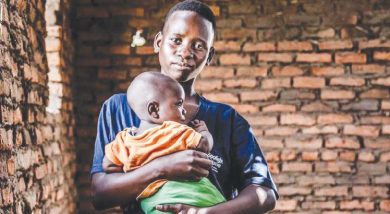Towards 2020 HIV and Aids targets
For Moffat Tobias, the year 2012 was hell. In 11 months, he was bedridden more than six times with headache, fever and general body pains.
He describes the feeling as strange, but says he did not take it as a serious disorder or associate it with HIV and Aids, because he had undergone HIV testing several times the previous year and the results were negative.
“I went to the hospital and was assisted, but the condition recurred. This is the time I decided to undergo another HIV test. I was so upset to welcome the news that I am HIV positive,” says Tobias from Mphepo Village, Traditional Authority (T/A) Wimbe in Kasungu.
He recalls feeling the world closing down on him. If it was not for the timely counselling, says Moffat, he could have committed suicide.
“One message saved my life. They told me that it is possible to live a healthy life if I conformed to their counsel,” he says.
Today, Tobias is a proud beneficiary of the free antiretroviral treatment (ART) programme, which began in 2004 and according to UNAids report, ART has since saved 260 000 lives and reduced HIV transmission of mother to child by 67 percent.

Four years later, Tobias challenges that since he started to take antiretroviral (ARV) drugs, he has never experienced a serious illness to deter him from his everyday chores. He reveals that a recent checkup exposed that his viral load has been drastically suppressed.
A stone throw away from his house is Agnes Banda, who is also living positively. In August this year, she delivered a bouncing baby boy, who is HIV-free.
“I am happy that my child is negative. This has been possible because I obeyed the hospital instructions,” says the 38-year-old mother.
Yesterday, Tobias and Banda joined fellow Malawians and the rest of the world in commemorating the World Aids Day preaching that a health living is possible after HIV infection. Their stories mirror Malawi’s strides in fighting HIV and Aids, which experts say is “the biggest success story across all sub-Saharan nations”.
According to UNAids, new HIV infections have declined by 41 percent since 2005. In the same vein, HIV and Aids-related deaths have drastically dropped by 51 percent.
The National Aids Commission (NAC) estimates that nearly 901 000 Malawians are living positively, down from about 1.1 million in 2014. The Global Aids Response Progress Report released this July, states that about 533 027 people are on ART.
Presently, Malawi has joined the global race to achieve the 90-90-90 HIV targets by 2020. The global agenda requires that UN member states ensure 90 percent of people living with the virus are tested, 90 percent of these are on treatment and 90 percent of those on ART have a suppressed viral load. This is a daunting task and to achieve the ambition, experts insist, it takes more than rhetoric and new practical approaches.
Malawi’s success story, argue experts, will never attain the 2020 ambition if the country does not address the impacts of the pandemic amongst the vulnerable groups such as women and girls, sex workers and homosexuals.
Other derailing factors according to UNAids are stigma, defaulting treatment due to religious beliefs and discrimination.
UNAids executive director Michel Sidibé, in a press statement released ahead of the World Aids Day, adds that co-infections such as tuberculosis, cervical cancer and hepatitis C, have the potential to derail the 2020 ambition.
“TB caused about a third of Aids-related deaths in 2015, while women living positively are at a four to five times greater risk of developing cervical cancer. Taking Aids out of isolation remains an imperative if the world is to reach the 2020 target,” he says.
Sidibe adds: “With access to treatment, people living with HIV are living longer. Investing in treatment is paying off, but people older than 50, who are living with HIV, including those on treatment, are at increased risk of developing age-associated non-communicable diseases, affecting HIV diseases progression.”
This is the 28th commemoration of the World Aids Day as a public awareness campaign on HIV and Aids. Health experts say while the day receives the institutional support that so many fought to win, it is time to look at what needs to be accomplished to end HIV.
Already, a movement is gaining sway worldwide to change focus on the fight against HIV and Aids by “coming together as a global community and embracing and celebrating our diversity, and by fighting for the human rights of all” rather than just relying on science.
Kasungu-based health expert, Peter Minjale, says the country is doing well on availability of treatment, but more needs to be done to achieve the 90-90-90 target.
“Most clients, especially those who switch from the first line treatment to another regiment of ART due to treatment failure, find no drugs in some clinics.
“Sometimes you find that the whole district has no drugs. Such people wait for days without drugs. This is not a healthy situation in the fight against the epidemic,” says Minjale who leads Tigwirane Manja Aids Support Organisation.
He adds: “For most of the children born with the virus, the issue comes down to issues of nutrition. It’s either women lacked nutritional support or had been falling sick frequently.”
While stigma and discrimination remain barriers to the fight against HIV and Aids, Minjale calls for “strong laws that would take to task perpetrators”.
Sidibé says there is hope for the future, but warns against complacent.
“We can’t stop now. This is the time to move forward together to ensure that all children start their lives free from HIV, that young people and adults grow and stay free from HIV and that treatment becomes more accessible so that everyone stays Aids-free,” he says. n





